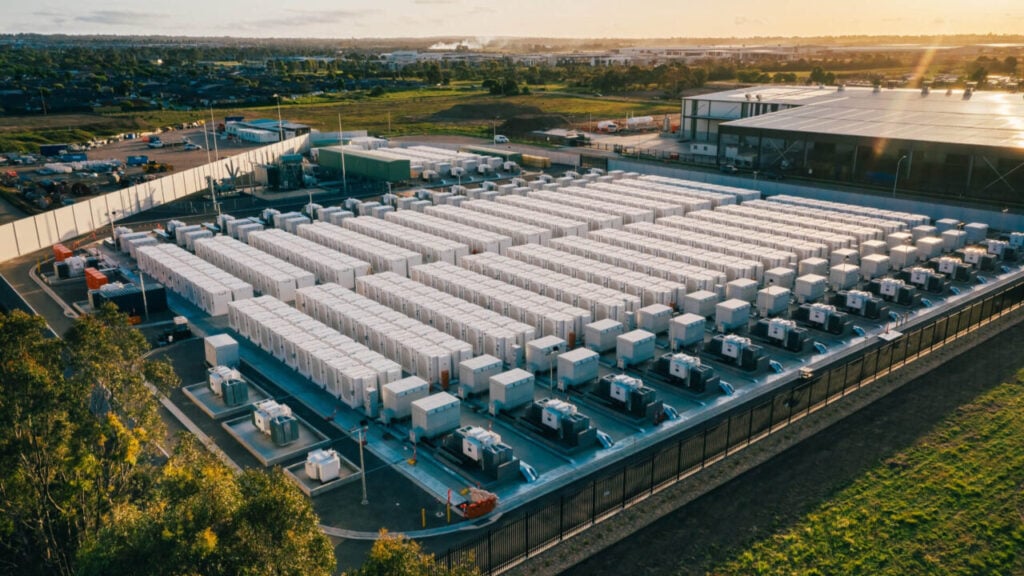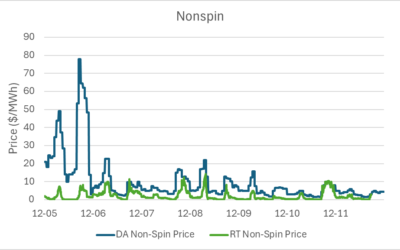
The hugely anticipated draft National Electricity Market (NEM) review report, led by Tim Nelson, has been released, outlining key market reforms with implications for energy storage.
Released yesterday by the Department of Climate Change, Energy, the Environment and Water, the NEM Review Draft Report, from an expert independent review panel chaired by Associate Professor Tim Nelson, supported by Paula Conboy, Ava Hancock, and Phil Hirschhorn, identifies energy storage as a cornerstone for managing variable renewable energy (VRE) and ensuring grid reliability in Australia.
Indeed, the country is now home to what is claimed to be the world’s biggest operational battery energy storage system (BESS) in terms of power output – the 850MW Waratah Super Battery.
However, as noted in the review, switching to a grid dominated by variable renewable energy generation can compromise grid reliability. The Australian Energy Market Commission (AEMC) recently predicted that South Australia and New South Wales could experience reliability gaps from 2026-27 and 2027-28.
Try Premium for just $1
- Full premium access for the first month at only $1
- Converts to an annual rate after 30 days unless cancelled
- Cancel anytime during the trial period
Premium Benefits
- Expert industry analysis and interviews
- Digital access to PV Tech Power journal
- Exclusive event discounts
Or get the full Premium subscription right away
Or continue reading this article for free
This presents an opportunity for energy storage technologies, including long-duration energy storage (LDES) systems, to play a vital role in stabilising the grid and propelling Australia’s energy transition.
Indeed, the NEM review states that the industry should focus on projects that align with the NEM’s evolving needs, such as hybrid renewable-storage systems and grid-scale BESS.
Supporting long-term investments in energy storage
According to the report, mechanisms should be introduced to support investment in critical areas of the NEM. The report references an Electricity Services Entry Mechanism (ESEM) to extend forward signals from derivatives markets, supporting long-term investments in firm renewable energy generation and storage.
The creation of the ESEM would evolve existing initiatives, such as the Capacity Investment Scheme (CIS), which uses reverse auctions to drive competitive investments aligned with reliability requirements and jurisdictional emissions goals.
While retaining the core features of these schemes, the ESEM introduces several enhancements to ensure it is more effective and sustainable in the long term.
The proposed mechanism is designed with three critical attributes to ensure its success. The ESEM is intended to be a permanent feature of the NEM, embedded within the National Electricity Law (NEL).
This would ensure its longevity and provide a stable framework for investors to plan and execute projects over the long term.
Unlike existing schemes, the ESEM focuses its support on the later years of a project’s financed life (roughly ~7-15 years post-commercial operations – subject to consultation).
By targeting risks the market cannot manage, the mechanism ensures that resources are allocated efficiently, reducing unnecessary costs and improving the financial viability of long-term investments.
A standout feature of the proposed ESEM is its integration with financial derivatives. These derivatives, defined through processes outlined in Recommendation 6B of the report, would be used to contract new investments.
Over time, the contracts will be progressively returned to the market, minimising consumer costs, keeping risks within the market, and enhancing liquidity and access in derivatives markets.
Encouraging participation in Essential System Services
Ancillary services, often referred to as Essential System Services (ESS), are functions that support the reliable operation of the electricity grid. These include frequency control, voltage regulation, inertia provision, and system restart capabilities.
Historically, these services have been provided by synchronous generators, such as coal and gas-fired power plants, which inherently possess the physical characteristics needed to stabilise the grid.
However, as these traditional generators retire and are replaced by variable renewable energy sources like wind and solar, the grid faces new challenges. This creates a growing need for alternative resources, such as energy storage systems, to step in and fill the gap.
Energy storage technologies, including batteries, pumped hydro, and compressed air storage, are uniquely positioned to provide many of the ESS required for grid stability. Creating more incentives for participation could even benefit Australia’s NEM.
The report states that developing robust frameworks that incentivise participation could help unlock the full potential of energy storage.
These frameworks should address several key areas. Market design should create markets for ESS that allow energy storage providers to be compensated for their services.
This includes establishing clear pricing mechanisms for frequency control, voltage regulation, and other ancillary services.
Regulatory support should update regulations to recognise energy storage’s unique capabilities and ensure its eligibility to participate in ESS markets. This may involve revising technical standards and operational requirements.
The report states that potential financial incentives should support the deployment of energy storage systems, particularly in regions where traditional generators are retiring and ESS needs are most acute.
Technology integration should also encourage developing and deploying advanced control systems that enable energy storage to provide ESS effectively and efficiently.
Meanwhile, stakeholder collaboration should involve industry stakeholders, including energy storage providers, grid operators, and policymakers, in co-designing frameworks that meet the needs of all parties.
ARENA’s role in advancing zero-emission energy storage
According to the report, the Australian Renewable Energy Agency (ARENA) is well-positioned to accelerate the development and deployment of zero-emission firming technologies, such as long-duration energy storage, compressed air storage, flow batteries, pumped hydro, hydrogen turbines, and demand response solutions.
Increased support from ARENA for zero-emissions firming technologies could further decarbonise the NEM; however, immediate government action is recommended to fund the gap and incentivise investment in scalable long-duration energy storage (LDES) technologies like flow batteries and liquid air storage.
Improving liquidity and transparency in Australia’s NEM
Another key mechanism proposed in the report is the Mandatory Market Making Obligation (MMO), which would improve liquidity, accessibility, and price transparency in the NEM derivatives market.
It builds upon lessons learned from existing frameworks, such as the Market Liquidity Obligation (MLO), and international examples from countries like New Zealand and the UK.
Unlike the MLO, which is only triggered during specific reliability gaps, the MMO would operate permanently, which the report says will ensure continuous liquidity and price transparency.
This approach would provide small retailers and other market participants with consistent access to contracts and reliable price benchmarks. Participation in the MMO would be mandatory for market participants above a predefined size, including large generators, retailers, and vertically integrated entities.
The MMO would focus on a small set of standardised, exchange-traded derivative contracts, co-designed with industry stakeholders and the Australian Energy Regulator (AER).
These contracts would address the evolving needs of buyers and sellers in a system transitioning to VRE.
Participants would be required to offer contracts with a maximum bid-ask spread and minimum trading volumes, ensuring efficient price discovery and market liquidity.
Additionally, the MMO would account for regional differences in the NEM, such as policy settings and market structures, ensuring it is tailored to each area’s unique needs.
One of the MMO’s key objectives is to support the development of long-term investment signals by linking with the ESEM.
This integration would facilitate trade in financial contracts that align with the evolving market, creating a stable environment for long-term investments in renewable energy and firming technologies.
The MMO also aims to enhance liquidity, improve price transparency, support retail competition, and facilitate investment in the energy market.
Energy storage and price dynamics in Australia
Energy storage technologies, including battery storage and pumped hydro, play an increasingly important role in price formation. These resources shift energy from periods of low demand or high supply to periods of high demand, effectively setting prices in the process.
Flexible demand, driven by industrial processes, electric vehicles (EVs), and smart appliances, is also becoming a critical factor in price formation, reflecting the value consumers place on electricity usage at different times.
The report also notes that the rise of non-scheduled resources, such as rooftop solar, battery storage, and flexible demand, introduces additional complexity to the market.
These “hidden participants” are not directly visible to the Australian Energy Market Operator (AEMO) or other market participants, making it more difficult to maintain system stability.
Uncoordinated withdrawal or power injection by these resources during critical periods can disrupt essential services such as frequency and system strength, posing operational risks.
To address these challenges, the review proposes several reforms to improve the visibility of price-responsive resources and enable consumers to benefit from becoming price-responsive.
These reforms aim to tackle inefficiencies in bidding practices, enhance visibility of battery state of charge information, and mitigate the impact of transmission network outages on the spot market.
Additionally, market price setting adjustments have been recommended to align with the changing needs for energy, services, technologies, and market dynamics.
The consultation period for the Draft Report will close on 17 September 2025. The Draft Report also mentions that there will be ongoing engagement with key stakeholders as the process progresses. The final Report is anticipated to be released by the end of 2025.
Our publisher, Solar Media, will host the Battery Asset Management Summit Australia 2025 on 26-27 August in Sydney. You can get 20% off your ticket using the code ESN20 at checkout.





